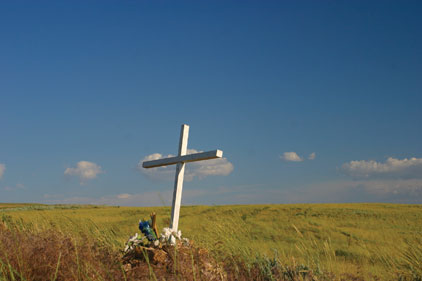“As the Chinese might say, the image is as rare as phoenix feathers and unicorn horns here, where the Communist Party suppresses any mention of the 1989 violence,” according to The New York Times. ‘I can’t imagine ever being witness to that image being shown in Beijing again, even if I stay here for another 50 years,’ ” The Times quoted one witness. He won’t see it again soon. The next day, Cirque du Soleil stripped the photo from a montage of images showing civil rights abuses and protests that accompany Jackson’s song, “They Don’t Care About Us.”
Corporate censorship
This censorship brought to mind what several safety and health managers have told me over the years.
“A fatality typically leads to a stand-down with its temporarily high safety focus that in time fades back into leadership’s multi-cultural reality.”
“There are certainly lots and lots of examples where companies have a very bad experience and then “see the light” until the memory grows dim and the players change bringing another cycle of cutbacks and total emphasis on returns.”
A different tact
Why don’t more companies take a page from Kent State University?
“The tragic events of May 4, 1970, had a profound impact on Kent State University, the nation and the world. In the ensuing years, Kent State’s learning community has honored the memories of Allison Krause, Jeffrey Miller, Sandra Scheuer and William Schroeder,” states the university’s official website. “The Kent State University community welcomes visitors to the historic site of the events of May 4, 1970, and invites all who visit our campus to inquire into how such a tragedy could occur…”
Or why don’t more companies suffering on-the-job fatalities consider the proliferation of roadside memorials?
These memorials mark the last place on earth where a person was alive. Usually the memorial is created and maintained by family members or friends of the person who died. A handwritten message, personal mementos etc. may be included. Apart from their personal significance, these memorials also serve as a reminder and warning to other road users of the dangers of driving, and to encourage safer driving.
Mothers Against Drunk Driving (MADD ) supports and encourages survivors to build and maintain roadside markers.
Rare sights
Only twice have I seen memorials to fallen workers. One was a large plaque embedded in a brick wall outside a rest stop on Interstate 95 in Maryland detailing the nearby deaths of two highway workers. The other was much less visible to the public. Walking a trail in rugged country about 50 miles east of San Diego near the Mexican border, I came across a marker with the name, age and hometown of a young forest firefighter who had perished near the spot. This wasn’t intended as any kind of “teaching moment” or reminder. It would hardly be seen by anyone. A life had been cut short, in the line of duty, and that loss and that commitment to service were being honored.
Go to OSHA’s homepage. It will tell you
4,383 workers died on the job in 2012, according to the Bureau of Labor Statistics. Brief descriptions of fatalities, and their dates, flash above
the number:
“6/18/2013 PR Worker killed when side walls inside an excavation collapsed.”
“5/23/2013 FL Worker died from oxygen deficient atmosphere in a confined space.”
“5/29/2013 TX Employee died after being pinned underneath 1,500-pound shoring panels during an excavation.”
Imagine that
Imagine placing a marker next to that confined space with the name of the worker, his or her age, occupation, hometown, and years of service for the company, along with a brief description of how the fatality occurred.
Morbid. Absurd. “Get real.” That’s the general reaction I imagine. It would honor a life, and the dignity of work. Serve as a reminder. But by and large we haven’t gotten past this sort of thinking: “Through the course of a workday, employees face numerous instances where they choose to put themselves at some risk for injury,” says a safety consultant.
“It was his own stupid fault.” That fault-finding – or denial –is why you won’t find many (any?) memorial markers inside factories or on buildings where construction workers died. Email me at johnsond@bnpmedia.com if you know of an exception. But the rule is, wipe the slate clean. It’s time to move on. Maybe it’s to protect a brand’s reputation. Or guilt. Maybe it’s the counsel of attorneys. Maybe, as a manager told me in describing a fatality: “He jumped over a barrier behind our backs. We never knew.” Maybe it’s the rationale: You see, a worker in a trench or a confined space isn’t like a soldier, or a fire fighter, or a young guy killed by a drunk driver, or students mowed down by the National Guard, or run over by tanks in a square. He’s a working man. He knows the risks.
It seems implausible to sweep more than 4,000 deaths a year under our national consciousness with the excuse that they all could have avoided it. That there is nothing to learn or nothing to honor. To me it’s insulting, disrespectful, cold and outrageous.
An exception to the rule does exist. The American Traffic Safety Services Association’s (ATSSA) National Work Zone Memorial Wall (NWZ Memorial) memorializing the names of those killed in highway work zones. An average of 20 to 30 people die in work zones annually, with an average of at least one fatality involving a worker. “A living tribute to their memory,” the wall travels to communities cross-country year-round to raise public awareness of the need to respect and stay safe in America’s roadway work zones, according to the ATSSA. Click www.atssa.com/TheFoundation/TheNationalWorkZoneMemorialRespectandRem.aspx for an application to host the wall, to submit the name of someone who’s been killed in a work zone or to search for a name.
Still, I wish more executives were like Paul O’Neill, who when he was CEO of Alcoa responded to a fatality at one of his facilities by bluntly telling his lieutenants at a meeting, “We killed that boy.” That’s owning up – not erasing a memory.





